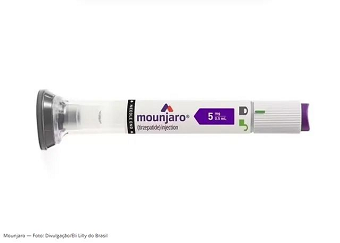Managing obesity-related metabolic challenges requires comprehensive medical guidance, and many individuals are now turning toward advanced GLP-1/GIP therapy to support weight reduction, appetite control, and improved insulin sensitivity. These pharmacological approaches have shown promise for patients who have struggled with plateaued results on conventional diets. Midway through this introduction, the therapeutic demand for Mounjaro injection in Dubai has increased due to its dual-pathway mechanism that not only targets hunger signals but may also help regulate blood sugar levels in individuals with type 2 diabetes. As the clinical community continues to evolve its approach to metabolic care, this injectable treatment has emerged as an option worth assessing through professional consultation and ongoing monitoring.
How the Treatment Works with Dual Regulation
The medication mimics key hormones involved in metabolic signaling. When taken consistently, many patients report reduced cravings and prolonged satiety. In addition, it may assist with lowering post-meal glucose spikes and decreasing circulating insulin levels in insulin-resistant individuals.
Modulation of Appetite Hormones
The treatment activates specific hormone pathways which send a message of fullness to the brain, helping patients reduce calorie intake without the feeling of deprivation.
Influence on Blood Glucose
Gastric emptying slows, leading to a more gradual absorption of carbohydrates. This may allow for steadier energy levels and fewer glycemic swings.
Who Can Benefit From This Therapy
Candidates often include individuals with difficulty controlling hunger, those with a history of weight-loss relapse, and patients experiencing prediabetic trends. It is important to remember that a medical evaluation should determine eligibility.
Weight-Loss Plateaus
Patients who previously lost weight but then regained it may find renewed progress through combined nutritional modification and injection therapy.
Hormonal Imbalance Support
Individuals affected by metabolic syndrome may see improvements when therapy is paired with movement therapy and nutritional adjustments.
Safety Considerations and Contraindications
Like all prescription medications, the therapy should be prescribed based on a full diagnostic assessment. Patients should disclose medical history, allergies, and current medications.
Possible Side Effects
Reported side effects may include:
-
Mild nausea
-
Fatigue
-
Temporary gastrointestinal discomfort
-
Occasional headaches
These effects are typically manageable and tend to reduce as dosing stabilizes. Severe abdominal pain or persistent vomiting should be reported immediately.
Cardiovascular Monitoring
While some patients may see improved cardiovascular markers, monitoring blood pressure and heart rate during treatment remains important.
Lifestyle Integration and Patient Education
Educating patients on nutrient-dense foods, optimal hydration, and sleep hygiene complements therapy outcomes. Healthcare providers often recommend low-glycemic meal plans and progressive resistance training.
Behavioral Modification
Habit tracking and nutritional journaling support adherence, offering insight into hunger patterns and portion sizes.
Hydration Strategy
Because delayed gastric emptying can increase fullness, hydration timing becomes more significant, helping to reduce digestive discomfort.
Internal-Link Anchor (Used Naturally)
Many patients combine metabolic therapy with preventive screenings such as an STD Test in Dubai to maintain a comprehensive health profile and reduce systemic inflammation risk.
The Role of Professional Follow-Ups
Scheduled appointments provide opportunities to monitor biometrics, assess dose adjustments, and evaluate metabolic improvements.
Titration
Dose escalation should be gradual, observing tolerance and minimizing discomfort.
Nutritional Reinforcement
Periodic micronutrient testing ensures patients do not develop deficiencies from reduced appetite.
Importance of Medical Supervision
While off-label use circulates online, physician oversight ensures safe storage, sterile injection technique, and proper dose titration. Supervision also includes monitoring for rare gastrointestinal motility complications.
Drug Interaction Checks
Patients taking medications such as insulin, sulfonylureas, or blood-pressure regulators require tailored dosing strategies to avoid hypoglycemia events.
Long-Term Maintenance Planning
Once target weight is achieved, many medical professionals recommend a gradual taper, transitioning into maintenance strategies focused on fitness and dietary conditioning.
Metabolic Resilience
Sustaining results requires muscle-building exercise to raise resting metabolic rate and reduce regain risk.
Final Thoughts and Clinic Recommendation
For patients navigating metabolic health challenges, medically supervised injectable therapy can offer structure, confidence, and clinically backed support. When performed in a specialized setting, patients can expect thorough baseline assessments, dietitian involvement, and continuous progress tracking. Consultations at tajmeels clinic emphasize tailored protocols, ensuring treatment aligns with metabolic profile and lifestyle goals. For individuals seeking ongoing support with injection therapy, professional insight and evidence-based strategies at tajmeels clinic reinforce optimal outcomes and help maintain long-term stability without compromising safety.







0 Comments